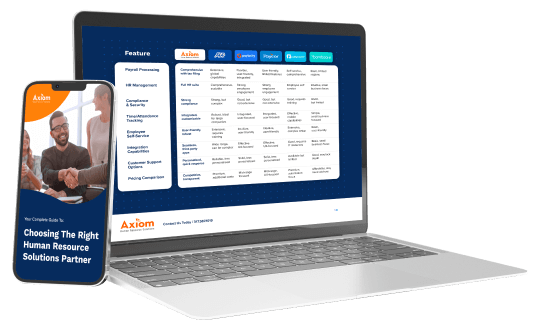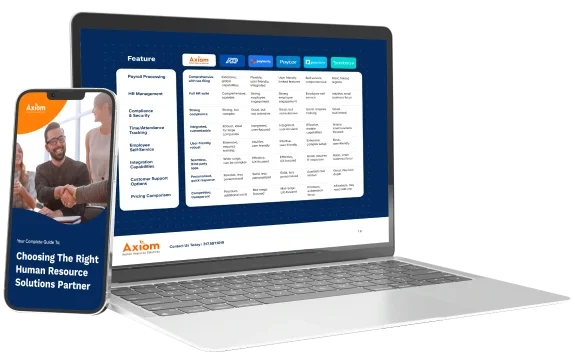
In 2025, changes to the Department of Labor overtime rule are creating new challenges for HR leaders. As the salary threshold shifts and more employees become eligible for overtime, businesses are rethinking how they manage pay, compliance, and workforce planning. If you’re an HR leader navigating this landscape, you’re not alone. These updates require clarity, strategy, and systems that can adapt.
This article will break down what the new Department of Labor overtime rule for salaried employees includes, what it means for your business, and how to prepare—without overwhelming your HR team or adding unnecessary risk.
What Is the Department of Labor Overtime Rule?
The Department of Labor overtime rule outlines which employees are eligible for overtime pay and sets salary thresholds for exempt and non-exempt classification under the Fair Labor Standards Act (FLSA).
Key elements of the rule include:
- The salary threshold for exemption from overtime pay
- The job duties test to determine exemption eligibility
- Eligibility for salaried employees who work more than 40 hours per week
Recent updates have raised the DOL salary overtime threshold, meaning more previously exempt employees may now qualify for overtime. For HR teams, this means it’s time to reassess who is eligible—and how you’re tracking hours and pay.
What’s New in the 2025 DOL Overtime Threshold?
The 2025 update to the DOL overtime threshold increases the minimum salary level required for exemption. Employees earning below the threshold—regardless of whether they’re salaried—must now be eligible for overtime pay if they work more than 40 hours per week.
Here’s what HR teams need to watch:
- The exact salary threshold may vary depending on role and region, but it represents a significant jump from prior years.
- Employees previously considered exempt could now require hour tracking and overtime compensation.
- Misclassifying employees could lead to audits, penalties, or legal risk.
This rule also introduces tighter expectations around threshold hours and job classification. As roles evolve, so must your processes.
How the Rule Affects Salaried Employees
A common misconception is that salaried employees are automatically exempt from overtime. That’s no longer the case.
The updated Department of Labor overtime rule for salaried employees clarifies that exemption depends not just on being salaried, but on meeting the salary threshold and specific job duties tests.
Implications for HR teams include:
- Increased need to monitor hours worked by salaried employees near the threshold
- Adjustments to compensation structures or job responsibilities
- Additional payroll reporting and tracking requirements
Steps HR Teams Can Take to Stay Compliant
You don’t need to overhaul your HR systems to stay compliant—but you do need a clear plan. Here’s where to start:
- Audit Employee Classifications Review who is currently considered exempt vs. non-exempt. Focus especially on salaried roles that fall near the new threshold.
- Implement or Update Time Tracking For employees close to the threshold, accurate time tracking is essential—even for salaried roles.
- Communicate Changes Proactively Set expectations, provide clarity, and ensure transparency around how compensation may be affected.
- Align Policies and Handbooks Ensure your internal documents reflect the new standards for exemption, overtime, and time reporting.
- Use Technology to Reduce Manual Work Manual tracking and reporting increase the risk of error. Axiom HRS + UKG offers automated compliance tools that help ensure accuracy and reduce HR workloads.
The Bigger Picture: Pay, Trust, and Culture
Beyond compliance, this rule is part of a broader movement toward pay transparency and workforce equity. HR leaders who navigate it well don’t just reduce risk—they build trust.
Employees notice when their employers stay ahead of regulations, communicate clearly, and lead with fairness. It’s not just about following the law—it’s about showing up for your people.
That’s where Axiom can help. We partner with HR leaders to implement systems and strategies that go beyond compliance—and help you build a world-class culture rooted in trust, performance, and care.
Need Help Navigating the New Overtime Rules? Axiom HRS helps businesses stay compliant, efficient, and focused on what matters most—their people.
Connect with our team to learn how we support HR compliance →
Department of Labor Overtime Rule FAQs
1. What is the new Department of Labor overtime rule?
The Department of Labor’s new overtime rule raises the salary threshold for exemption, expanding eligibility for overtime pay.
2. Does the overtime rule apply to salaried employees?
Yes. Salaried employees who earn below the updated threshold and meet job duties criteria must receive overtime pay for hours worked beyond 40 in a week.
3. What is the new DOL salary overtime threshold in 2025?
The exact amount varies but reflects a significant increase over previous years. It impacts who is considered exempt vs. non-exempt.
4. How do you calculate threshold hours for salaried employees?
Track total hours worked by salaried staff near the exemption line. If they exceed 40 hours and fall under the salary threshold, they qualify for overtime.
5. How can HR stay compliant with the new DOL pay rule?
Audit classifications, implement time tracking, update internal policies, and consider HR software or outsourcing partners like Axiom HRS to support compliance.


